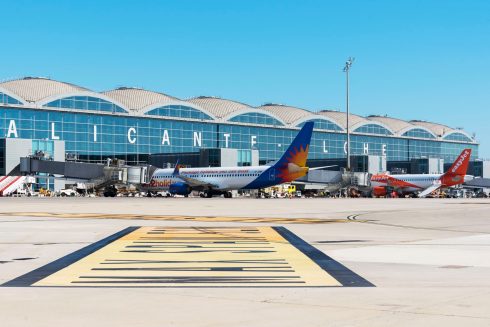THE United States has demanded that Spain and all NATO members commit to a ‘realistic path’ towards spending 5% of their Gross Domestic Product (GDP) on their military.
With the current informal target for NATO members being just 2%, it is a huge increase coming just a day after Trump announced 20% tariffs on the EU, which make up a majority of the alliance.
Speaking at his first meeting with his NATO counterparts in Brussels, US Secretary of State Marco Rubio laid out the Trump administration’s demand, explicitly adding it applies to ‘each and every member’.
This includes the alliance’s lowest defence spender, Spain, which spends around 1.2% – less even than Luxembourg.
READ MORE: Europe in shock as Trump announces 20% tariffs on imports from Spain and the EU

Spanish Prime Minister Pedro Sanchez has been supportive of efforts to jack that figure up to the 2% target, but even this amount has been met with opposition from his own left-wing coalition partners.
However, the Trump administration did confirm to worried allies that ‘we will remain in NATO’.
“President Trump has made clear he supports NATO, we will remain in NATO,” Rubio stated, seeking to dispel fears about US commitment.
However, he insisted the alliance must be strengthened significantly.
Acknowledging the internal political challenges allies face after ‘decades building a broad social safety net,’ Rubio argued recent events, like the ‘large-scale land war in the heart of Europe,’ proved military deterrence is essential.
“We want to leave here with the certainty that we are on the path, a realistic path for each and every member to commit and fulfil the promise of reaching 5% of spending,” he declared.
Rubio added that this commitment includes the US itself, which currently spends below 3.5% of GDP on defence.
“If the threats are really as serious as I believe they are… then that threat has to be met with a full and real commitment,” he said.
He framed President Trump’s long-standing position not as being anti-NATO, but ‘against a NATO that doesn’t have the capabilities it needs.’
The UK echoed the call for higher spending, with Foreign Secretary David Lammy urging allies to increase investment to make NATO ‘stronger, fairer, and more lethal.’
NATO Secretary General Mark Rutte also acknowledged that a new spending target above the current 2% is expected, with figures around 3% or 3.5% being discussed in Brussels.
The American demand will come as unwelcome news to Spanish Prime Minister Pedro Sanchez, who is grappling with opposition at home to increasing the country’s defence spending even to 2%.
Sanchez had tried to include budgets not currently classified as defence spending (like some technology investments) within the NATO total to meet existing targets more quickly on paper.
However, Rutte firmly rejected these calls to change how defence spending is calculated.
“We have a clear definition of what defence spending is, and what we don’t want is to dilute it,” he stated.
Rubio’s tough stance and Rutte’s rejection of creative accounting place Spain between a rock and a hard place ahead of another crucial summer summit.
Click here to read more Spain News from The Olive Press.








